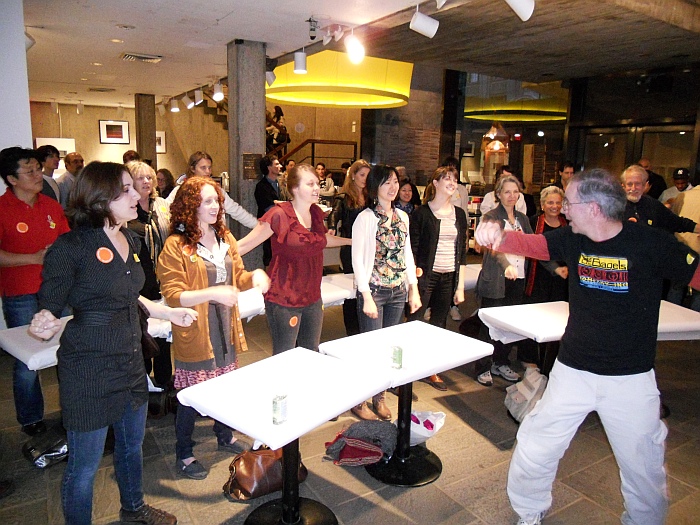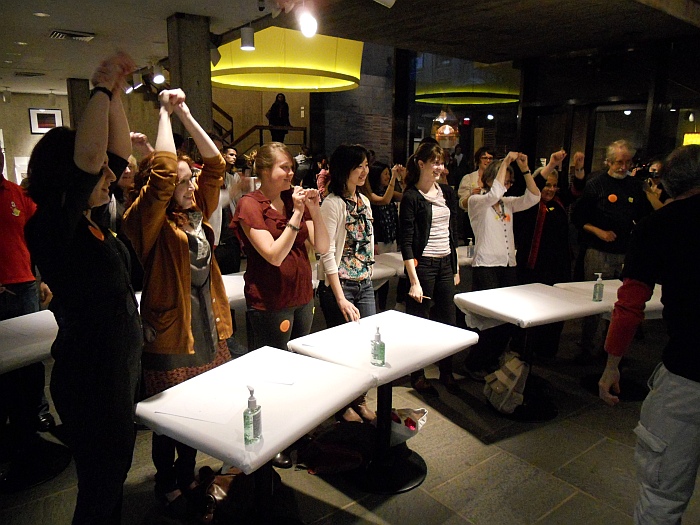In Part IV, the participants were
given bagels and toothpicks to mark the key positions and directions.

Here, you can see the high, low, and middle positions, which are key
landmarks for the necessary cut.
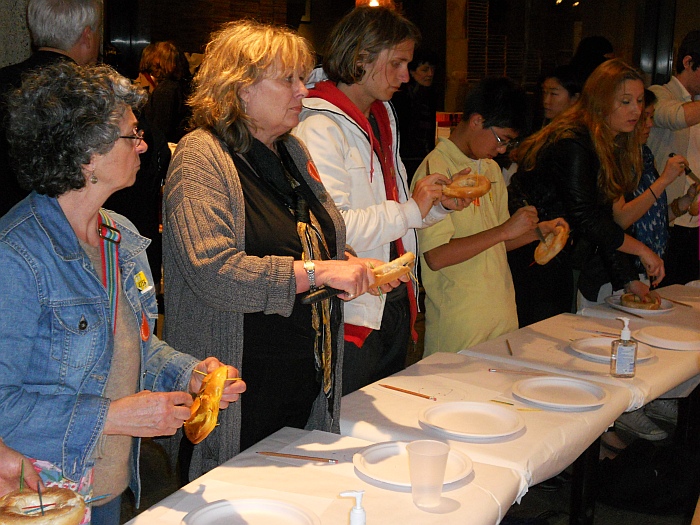
If these positions are understood, the cut is fairly straightforward
and the result is automatic.
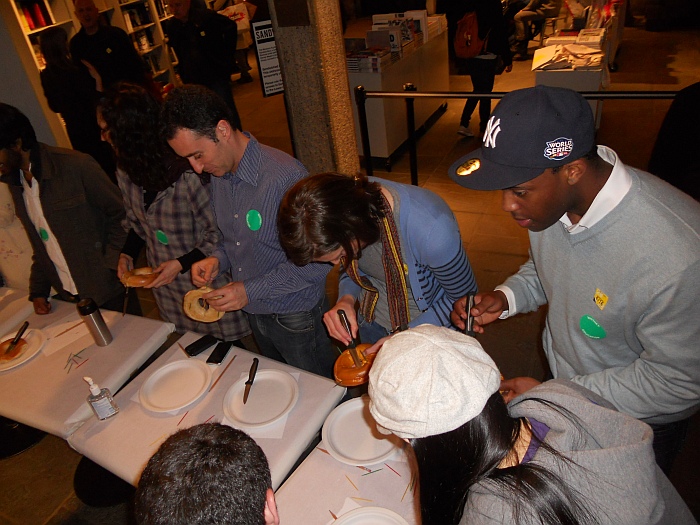
Finally, when everyone gets a knife and starts making the cuts, it is
the moment of truth.
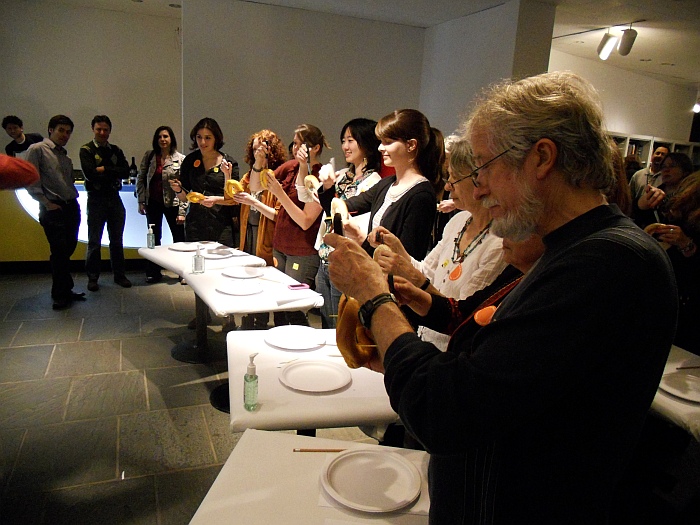
I was standing up in front to
demonstrate, so I made the cuts in the air. But I had expected the
participants to use the plates. I never figured out how to indicate to
everyone (without words) that even though I was demonstrating in the
air, they should do it on the plate on the table. I need to work on
that for next time...
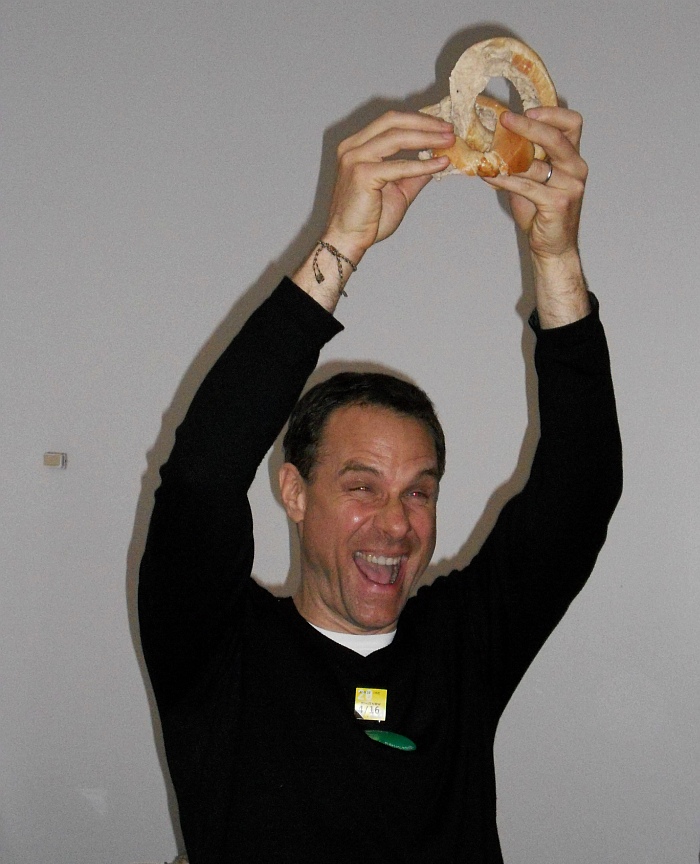
At the end, when people got it, it was very cool! There was lots of
shouting.

The result was quite a surprise for the participants since I hadn't
told them
what were were working towards.

So I was very happy that most people did succeed. (It makes me feel
like a good teacher.)
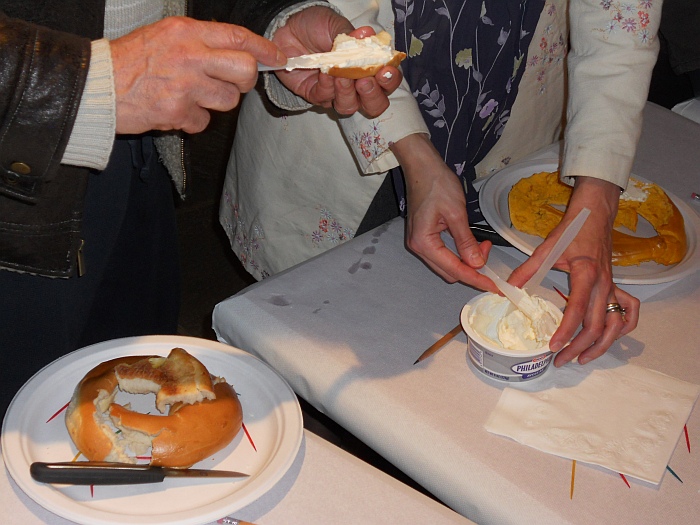
We celebrated then with some cream cheese and ate our work.

I'd like to thank my assistant Vi Hart for volunteering and helping
with everything.

And I'd like to thank the performance
artist
Aki
Sasomoto of
Culture Push
for
inviting me to participate in
the Biennial. Her work inspired me to try this. Here, after the
workshop, I'm offering her (and everyone) extra bagels
to take home.
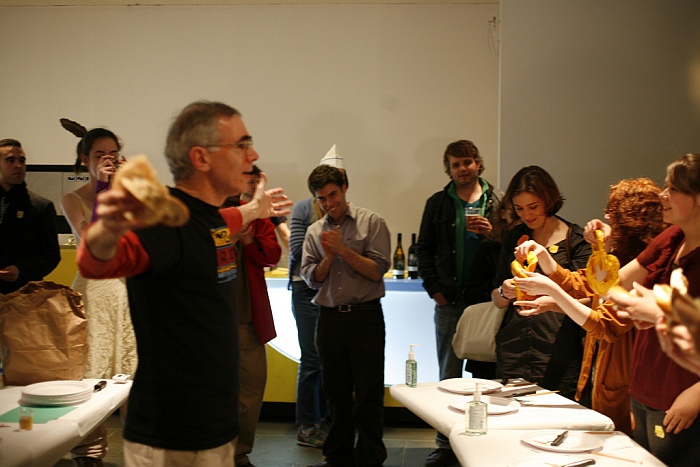
And finally, I'd like to thank all the
participants who bravely worked
along with me. This was really fun!
Oh, and it's not quite true that I
didn't speak. I began and ended by saying this poetic
preamble/postscript:
Mathematics is
full of wondrous ideas, beautiful beyond words, creating surprising
links.


